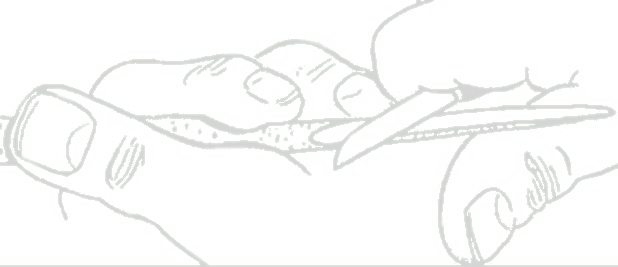When this idea started, it was open to any number of things. The overall size, the helmet style, the pack, uniform, etc. I settled on the sketch above. There's not much detail to whittle, but enough to illustrate my intentions.
The selection of the thickness on the finished soldier will determine the wood the the pattern is traced onto. I wanted only enough thickness to be able to thin the head, have a hint of shoulders, and whittle the arms. I settled on 3/8ths inch thick Basswood. After tracing the pattern onto the wood, cut the blank out with a scroll saw, and draw the detail on the blank. Add a center line, on the front and the back of the soldier.
At this point some experimentation in the whittling sequence may occur. I usually sit with the blank in my hand and visualize first my first cuts. Where will I make the first cut, second cut, third, etc. I know how I work, so I cut several blanks, to give me the freedom to experiment with the cuts.
The soldier to the right has been roughed in. This whittling is "in the round", or whittled on both sides. There's little detail, and no cleanup of the cuts. I'll do another one as soon as I can, in order to remember any changes in the sequence of cuts that I wanted to make.
I'll add some detail and clean the piece up; and determine the finish to apply.
The beauty of whittling these small items, is that you can carry around several blanks with your pocket knife and be ready to whittle any time the opportunity presents itself. With a little practice these are a fast whittle.




No comments:
Post a Comment